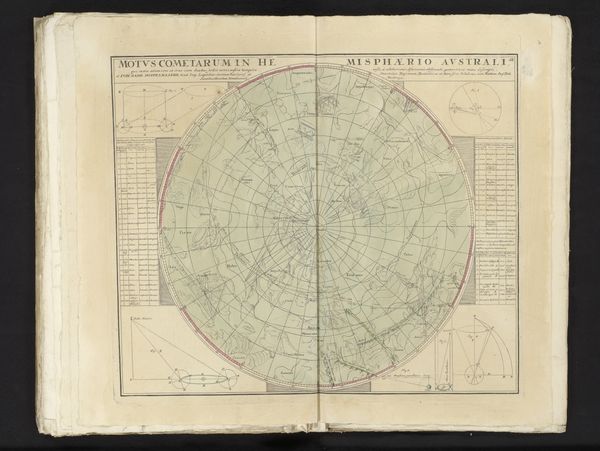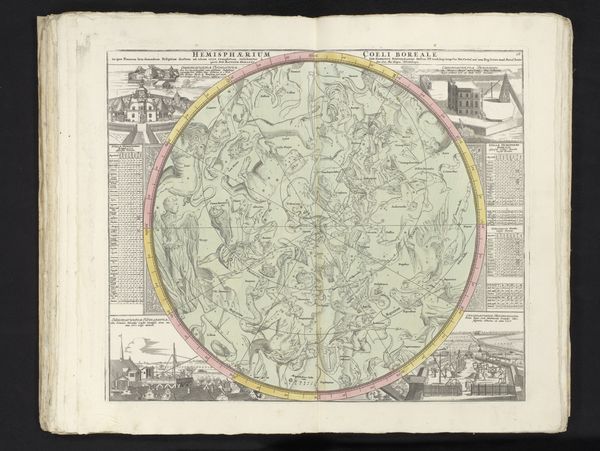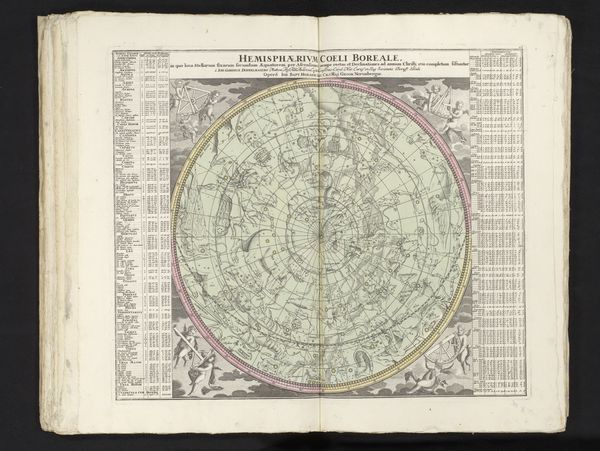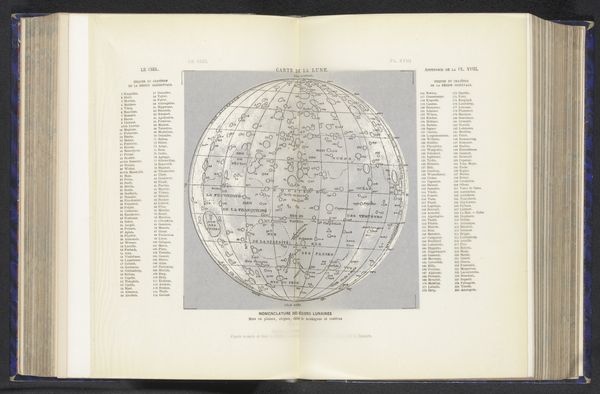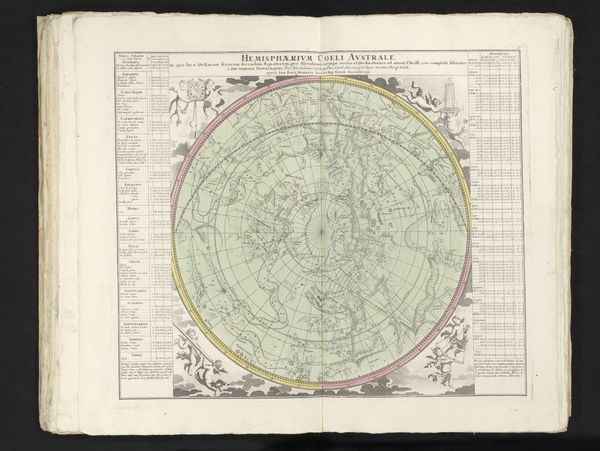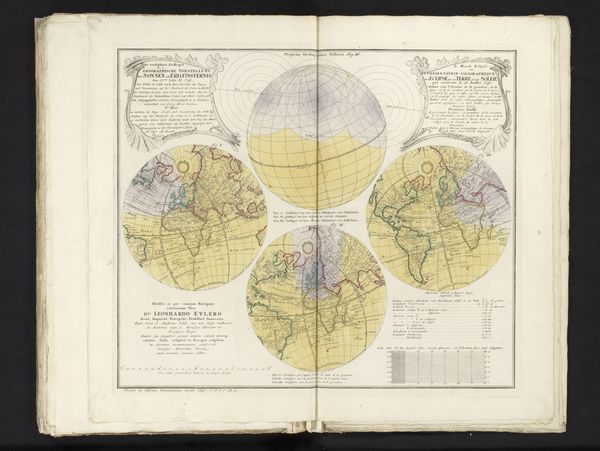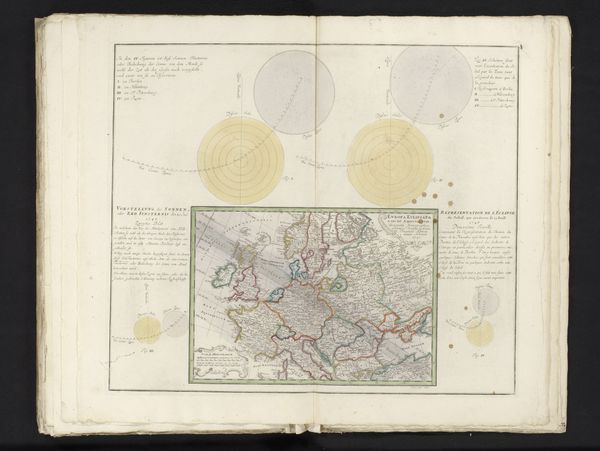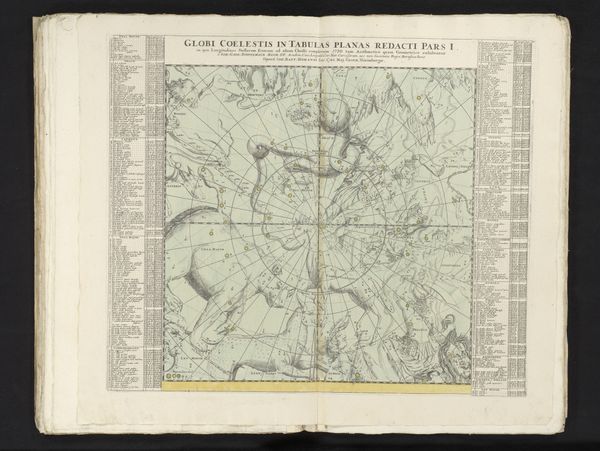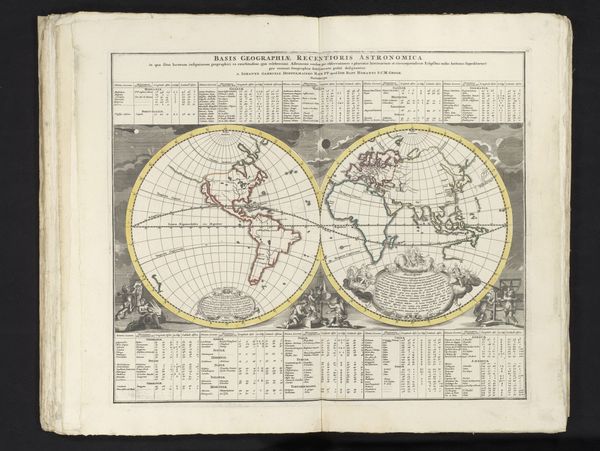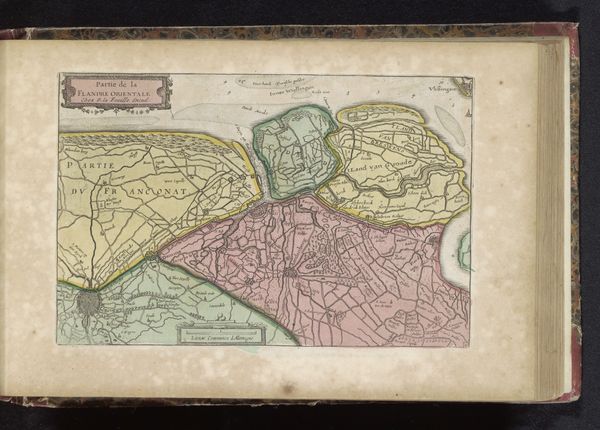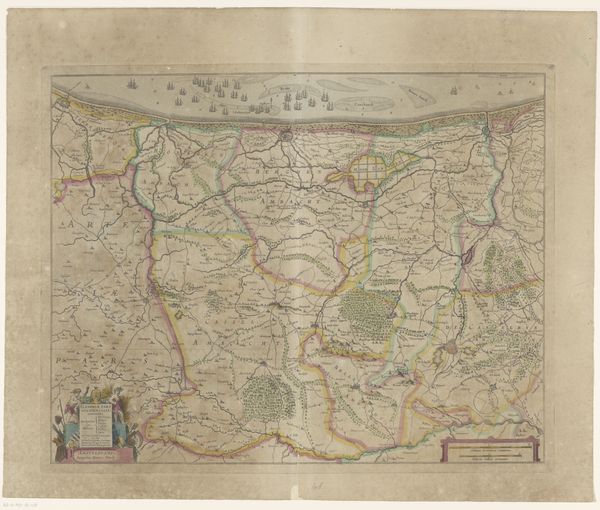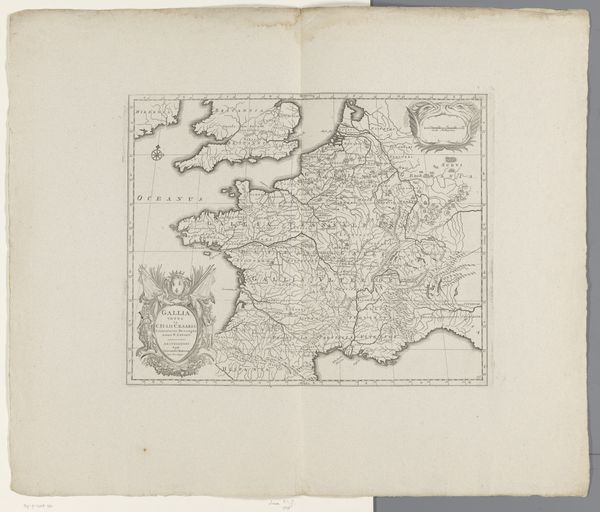
Hemelkaart met de noordelijke sterrenbeelden met de banen van verschillende kometen 1742
0:00
0:00
graphic-art, print, engraving
#
graphic-art
# print
#
landscape
#
geometric
#
engraving
Dimensions: height 489 mm, width 580 mm
Copyright: Rijks Museum: Open Domain
Curator: What immediately strikes me is the incredible detail, all rendered through engraving. Editor: Agreed. You can practically smell the ink. Let's give listeners a bit of context: This is "Hemelkaart met de noordelijke sterrenbeelden met de banen van verschillende kometen," which translates to "Celestial map of the northern constellations with the paths of various comets." It’s an engraving from 1742, currently held in the Rijksmuseum collection. Curator: A product of its time, certainly. There's such confidence imbued in charting the heavens. All the constellations, like these constellations down in the corner—a bestiary cast onto the sky. How would viewers in the 18th century responded to this way of perceiving the universe and mankind’s role within it? Editor: Absolutely. But before telescopes and photography, the process was intensely manual. Copperplate engraving allowed for intricate, replicable images, disseminating knowledge in ways never before possible. It wasn't just artistic; it was about accessible science, hand-made replications of complex scientific insights made available across vast audiences. Curator: Knowledge tied to human endeavors... I see the comets aren't presented as frightening omens, but as celestial bodies with charted paths, woven into the divine tapestry. Perhaps viewers perceived it as demystifying the night sky or solidifying our sense of control. The intention feels very humanist and optimistic. Editor: Yes, optimistic about scientific advancement and human agency within a divine construct. These engravings themselves were not created ex nihilo, of course, but rather the product of labour and artistry. Think about the skilled engraver translating astronomical data into these precise lines, the printers creating these multiples, all part of the social machine to share and promote astronomical science. Curator: Such maps served as cosmic mirrors. Even today, its enduring graphic style speaks to a particular moment where human reason tried to hold infinity within reach, rendered tangible. Editor: Right. It also underlines the idea of artwork as the result of skilled human craft, with tools shaping knowledge production at the cusp of the industrial era. A celestial map produced by terrestrial hands. Curator: I find this engraving deeply inspiring. The confidence and optimism... something we should remember today, facing other uncharted territories. Editor: Definitely. A fascinating confluence of artistry, science, craft and worldview, meticulously printed for mass circulation. A lasting testament.
Comments
No comments
Be the first to comment and join the conversation on the ultimate creative platform.
